Reverend Doctor Kim-Kwong Chan is Honorary Research Fellow at the Universities Center for China Studies, The Chinese University of Hong Kong. Here, his speech during a Conference held in Rome, 30th May 2017.
Since June 2014,[1] the Sino-Vatican relation has been warming up after the resumption of direct engagement between officials from both sides. Both countries have released encouraging signs suggesting that some agreements have been reached especially on the thorny issue of Episcopal Appointment. Should this Agreement be in effect, it will path ways for the gradual normalization and even perhaps full diplomatic relation between China and the Vatican, and the merging of the current Underground (Rome recognized) and the Official (Government Recognized) fractions of the Chinese Catholic Communities into one single Chinese Catholic Hierarchy. It will indeed be one of the most important ecclesiastical, as well as geo-political, event of this Century.[2] However, as the negotiation between China and Vatican is heading closer to a mutually agreed platform laying grounds for the building of an united Chinese Catholic Church, members from both ecclesial fractions seems to raise doubts, fears, anxieties, apprehensions and suspicions which run, paradoxically, contrary to mood of the negotiation. It seems that there still exists a significant gap between these two fractions despite the conciliatory Sino-Vatican Agreement which is within the reach. The challenge to reconcile these two fractions for a united Chinese Catholic Church seems to out weight what the Agreement can sustain through its legal terms and power vested by both Governments. Should this gap between the two fractions not being address in a proper way, the conflicts between them will continue despite any agreement reached by both Governments, and an authentic and united Chinese Catholic Church–the ultimate ecclesial objective of the Agreement–cannot be realized.
The gap between these two fractions had begun in early 1950s since the Communist Party of China became the ruling regime transforming China into a pro-USSR socialist society. In the climate of the Cold War, China took side with USSR and regarded the West, and any entity associated with the Western world such as the Catholic Church, as potential enemy of the Chinese Revolution. The Chinese Catholic Church was divided into two frictions as one group was coerced to work with the new Communist regime by seek ways to fit into the new Chinese socio-political reality resulting in disobey orders from Rome that prohibited any Catholic to cooperate with Communist authority as instructed by the Nuncio to China (1946-1951) Monsignor Riberi[3], where as the other fraction would follow directives from Rome to vigorously opposed this new Atheist regime even at the cost of martyrdom. Due to this tension, the two fractions have developed their own hierarchy hitherto antagonistic to each other.
This ecclesial situation in China is somewhat similar to the development of the Eglise constitutionelle (Constitutional Church, Chiesa costituzionale) and the Eglise refractaire (Refactory Church, Chiesa refrattaria) after the issue of the Constitution Civil du Clerge (Civil Constitution of the Clergy, Costituzione civile del clero) by the French Government in 1790 during the French Revolution[4]. The Constitution demanded all clergy to make an oath to support the State above the Pope resulting in one group supported the French Revolution and the other sided with the Papacy and both had their own diametrical ecclesial life such as consecrations of Bishops and liturgies.[5] The Chinese Catholic situation also somewhat resembles to its contemporary co-religious in Eastern Europe before the Fall of the Berlin Wall, with pro- government fractions under the authority of the communist governments, and the Pro-Rome friction obedience to the Pontiff and often operated in clandestine manner facing harassments or even persecutions by the civil authorities. Similar to their historical precedents, both fractions in China had hitherto developed their theological as well as socio-political justifications for their polarized positions.[6] Pro Government side often argued that the Church should adopt a contextual manner such as co-operating with civil authority for the continuous survival and influence of the Church in the society, whereas the opposing fraction would regard the loyalty to Rome and facing the cost of even martyrdom has been the main tenet of faith of the Church and any compromising stance would be seen as apostasy. Also both sides have bitterly opposed the other fraction with animosity ran for decades, and their followers would have little contact with each other compounded with various labelling and name callings often regarding the other side as the arch enemy.
If one looked at the historical case of the Constitutional and Refractory Churches in France, the Concordat between France and the Holy See in 1801 was meant to solve the splitting of the French Catholic Church as both Churches should obey the authority of the Pontiff. The Papacy reached an agreement with the French Republic by giving up some of the Papal authorities over the French Catholic Church, such as the selection of Bishops and other privileges, hoping to reconcile the conflicts between France and the Papacy, as well as between the Constitutional Church and the Refractory Church. The Concordat was a legal binding document that were negotiated between diplomats from both side well versed in canonical, diplomatic and political terms with full legal as well as Canonical power vested in the terms. Such Franco-Papal conciliation is striking similar to what is currently unfolding on Sino-Vatican negotiation. This type of negotiation is known in international negotiation, or diplomatic circle, as the Traditional Approach[7] which emphasizes more on precise legal terminology drafted by experts and enforced by authorities from signatory parties, than on the applicability, sustainability and the long term communal impact of such agreement.
The Franco-Papal negotiators did not incorporate the socio-psychological dimensions of the conflicts and had not addressed this issue from a pastoral perspective; of course one can hardly expected the ecclesiastical and secular leaders to do so in 18th Century as the leaders may have done in the 21st Century! In this case of the French Catholic Church, the internal conflicts between the two opposing camps seemed to be rather intense and emotions often ran high rendering unity a challenging task beyond canonical and legal framework of the Concordat, however meaningful that the Concordat may try to achieve. The post Concordat ecclesial dynamics were complex as many Refractory Bishops—supposed to be pro-Papacy which implied the obedience to the Pontiff as its hallmark–refused to obey the Concordat and instead they established the schismatic Petite Eglise (Little Church, Piccola chiesa) which took more than a century for most of its followers to re-join the Roman Catholic fold with still several thousand remain with the Petite Eglise today, more than 200 years after the signing of the Concordat! Such messy aftermath had damaged the ecclesial community in a very painful manner leaving behind bitterness, resentment, and hatred that took ages to heal as in the case of the Petite Eglise.
Ironically the Church supposes to proclaim the message of love and she should uphold the theology of reconciliation (or the Cross) as the centrality of the Gospel: men reconcile with God through Jesus Christ and we can forgive each other as God forgives us in the first place. Paradoxically one can easily observe that often ecclesial fractions can draw out the most unforgiving relations between Christians and socio-psychological factors often override spiritual values or Canonical rulings. With the Sino-Vatican rapprochement in sight, one may just hope that the Chinese Catholic Church can minimize such pain of fractional tensions through Divine Grace, lessons from history, as well as tools available in modern time which addresses to the socio-psychological dimension of conflict resolution. This paper intents to explore the tool of Conflict Resolution to interpret the current tension between the Official and Underground fractions of the Chinese Catholic Church, as well as to draw attention in extra-judicial areas of caution supplementing for a smooth reconciliation between these two fractions.
The disciplinary of academic studies on Conflict Resolution emerged since the 1950s to analysis and to seek ways to deal with the various human conflict situations: from regional dispute, civil war, communal strife, organizational behaviour, family relations, to one’s inner psychic tension. There are many models and practical guidelines developed to both analyse a conflict situation and to reconcile the differences between competing fractions for an optimal solution in various social scenarios usually incorporating extra-legal factors such as emotions, desires, and group dynamics, and are commonly known as Alternative Dispute Resolution Methods.[8] One of the methods which this paper chooses to use is the Conflict Resolution Model developed by the Danish Centre for Conflict Resolution[9] for it is simple, practical, proven in field work, and applicable to the ecclesial situation of the Chinese Catholic Church vis-a-vis tension between the Underground and Official fractions. The following discussions on Conflicts Resolution, unless mention otherwise, are taken from this Danish model. This paper will first establish what constitute a conflict, and follow by analysis on factors leading to the escalation and de-escalation of conflict. At the end, it will suggest a framework of reference towards a resolution. It is hope that insights from contemporary studies and experience on Conflict Resolution can enrich the pastoral dimension of the ecclesial healing process for the Chinese Catholic Church after the actualization of the Sino-Vatican Agreement, as such Agreement will establish a clear Canonical parameter leading to the surfacing of conflicts of real interests from various stake holders.
1) Conflicts
One needs to clarify whether the situation is a conflict or not as there is a clear distinction between disagreement and conflict. Disagreement focuses on the issue and maintains, and at time even strengthen, relations. For example, the Sino-Vatican negotiation teams may have many disagreements on issues such as the full recognition of the seven illicit Bishops. So long as there remains a working relations between team members from both sides, they may still be in disagreement but not in conflict as the relation between them are still intact. At the surface issues are seemingly easy to deal with as they are concrete and tangible issues resolvable by legal or Canonical solutions. However the effected stakeholders are human being with complex emotional responses towards the solution and their reactions are often prompts by their undercurrent psychological dynamics yet often appeared as rational justifications from different stances. However, if the concerned issue does not resolved by a long lasting solution which includes the address of the human emotional dimension, it would negatively affect the current relation. Should that be the case, disagreement may easily becomes conflicts prompting new issues to emerge from other unresolved conflicts, which may further stress the relation.
For example, a Canonically sounded arrangement reached by China and the Vatican for an illicit bishop yet non-satisfactory to him, not a long-lasting solution, may evoke negative emotions from him and related stake holders in his circle and these people may take retributive actions such as forcefully inserting himself in a Episcopal Consecration causing confusions and Canonical ambiguity to the new consecratee which in term may generate new issues to deal with in the future such as the uncertain Canonical status of the Consecratee vis-a-vis the faiths, and infusing mistrust on the current working relations for the negotiation teams as well as stressing Sino-Vatican relations and increase animosity between Underground and Official fractions. Therefore, conflict resolution has to deal with both the concrete issue which is easy and the human relations especially at the emotional level which are complex and challenging; otherwise any solution will be a short-lived one.
2) Escalation of conflicts
Conflict itself has an organic way of growth in the following stages of escalation as discussed in this section:[10] Conflict can also de-escalate in the opposite direction depending the availability of positive factors and the removal of escalating factors. In fact Conflict is dynamic and can escalate or de-escalate depending on the stake holder’s attitude and relations.
A) Disagreement (We do not have same idea)
This is a neutral stance without conflict between both parties as both side still focus on the issue and both are trying to deal with the issues without tempering the relation. However if the issue is not resolved quickly the relation will become muddled prompting either side to cross this boundary and escalating the situation. The Danish Centre for Conflict resolution emphasized that there is an important border between Disagreement and the next stage: Personification. Once this line is crossed, the two parties are entering into the Conflict zone as often one party would blame the other and the other would follow suit resulting to pointing fingers from both sides towards each other. The focus shifts from issue to relation.
In the case of the Chinese Catholic Church, perhaps a good example would be the Independent Episcopal Consecration in 1958 when two dioceses in China ask the Pope Pius XII to grant permission of the two candidates to fill the Episcopal vacancies. The issue was an Canonical one and both side might have disagreement on it as Rome might not have sufficient information on the socio-political reality in China due to the broken of relation between China and the Vatican. Unfortunately there was no opportunity for both side to clarify the issue. Soon the Holy See replied by citing a decree threaten to excommunicate those involved. Later Pope Pius XII issued the Encyclical Ad Apostolic principis[11] to those who were still in communion with the Holy See, implying that some had been cut off from the ecclesiastical communion, escalating the situation from an Canonical issue of Episcopal consecration to the deterioration of intra-ecclesial relations between those Chinese Catholics who chose to obey and those who disobeyed the Papal Decree–a subtle shift from issue to relation.
B) Personification (It is all your fault… not mine or ours)
Conflict begins when one side shifts the attention from issue to relation, and the focus is on the fault of the opposing party. Negative emotions such as anger, confuse, fear…etc. would easily interfere the communication focusing further away from the issue. The blamed side would also retaliate by finding fault from the other party. Both sides began to doubt the intention of the other. Original issue is soon overshadowed by mutual blaming. Hostility, self righteousness and victimization became the main stance to prevent effective communication.
After the two Independent Consecrations in 1958, the Chinese Catholic Church was de facto split into two camps. Those who opt for Independent Consecration, despite various arguments and justifications, felt resentful, bitterness, betrayed, guilty, shameful, self-doubted, self-loath and misunderstood. They blamed the Holy See’s insensitivity, patronization and highhandedness. The other camp felt pressured, betrayed, self-righteous, despaired, victimized and bitter. They blamed their co-religious taken the different stance than theirs as apostasy. From this point onwards, relation between these two fractions are fuelled by negative emotions as both side personify the tension by blaming the other party.
C) Problem Expands (Always troublesome to deal with them)
Since issue is no longer the focus, both sides would look into the past relations for more fault findings to re-enforce one’s rightful position. Such position would not only provide ample of historical events to justify the cessation of current dialogue, but also to escalate the conflict by suggesting that there is no benefit to deal with the opposing party as it had proven in the past and will be so in the future. For example, the publications from the Official Church would keep citing historical incidents on the wrong doings of the Catholic missionaries serving the interests of the Imperialists to humiliate China, a political stance taken after China denounced the Canonization of the 120 Saints by the Holy See in year 2000. Such anachronistic reading into history gives an impression that Catholic missionaries had always been “bad” when they came to China, to justify the China’s conspiracy theory on the intention of the Vatican to humiliate China and to give justifications not to deal with the Vatican in future. Similarly, the cautions and doubts raise by eminent Church prelates such as Cardinal Joseph Zen on the current Sino-Vatican negotiation have very much been based on negative experiences of Chinese Catholic Church which she had gone through more than half a century ago. Therefore, the argument runs similarly: it has always been trouble to deal with the Communist Government as it had been seen in the past, it is the same today, and it will be similar in the future. So, the logical conclusion would be to stop dealing with the current regime or else the Church will suffer more in future.
There is also an important border between The Problem Expands stage and the next stage: Dialogue Stops. Once communication ceases, it is difficult to know the opposite party other than by guessing and projecting shaped by prejudice and partiality. Often misunderstand would arise which further complicated the relation and clouded the issues. Once the relation escalated to this stage, there is little chance to resolve anything.
D) Dialogue Stops (and Gossips starts)
Once formal communication stops, both parties rely on informal channels which are often distorted, partial and with ambiguous contents providing fertile ground for even more distorted interpretations. Selective listening is prevalent and misinterpretations are common. At this stage, both side may feel that any communication is futile and both may predominately interject negative meaning from any message conveyed; gossips, conjectures and rumours are the main source of information. There is little trust exiting and no chance for clarification. The relation would further deteriorated.
After the Canonization Incident in 2000, there had been a period of non communication between the Vatican and China, other than through some unofficial messengers. There had been many speculations guessing the intention of the opposing party. Eventually contacts resumed yet obstructed by illicit consecration of Bishop of Yunnan in 2006 followed by a number of illicit consecrations leading to the excommunication edict to some of them in 2011. China retaliated by banning more than 20 Catholics aboard from entering China. The official communication stopped again till 2014 when both side resumed official contacts. From 2000 till 2016, the dialogue between Vatican and China has been fragmented, irregular, and often distorted. The relations between the Open and the Underground communities basically mirrored the Sino-Vatican relations, with little to no dialogues running between them and both holding a mistrust, and some even hostile, stance towards each other.
The following stages of conflict escalation are: Enemy Images, Open Hostility and Polarization. It has been indeed nothing less than a miracle that the Sino-Vatican relation could continue in dialogue since 2014 to prevent the escalation of the Sino-Vatican conflicts. Since 2014, both side engaged into official dialogue and slowing de-escalated the tension, and gradually focused back onto the issues at hand with some mutually trusting bases capable to sustain the current negotiations. Both sides had suspended provocation such as illicit consecration or excommunication and both sides have shown positive gestures as increasing number of banned Catholic from aboard can enter China, and Vatican is urging the Underground Catholic community not to take drastic action and instead trust Rome which it hold their rights and interests in mind. It seems that both sides want to deescalate the tension.
However the relationship between the Open and the Underground Chinese Catholic communities runs not in parallel with the Sino-Vatican relations as both communities are not engaging in direct dialogue since half a century ago, and they have no place to voice their desire directly at the negotiation as their interests are represented by others. Their relational conflicts may probably escalated by, ironically, the Sino-Vatican Agreement, as some of them may fear that they their interests may betrayed by others and there has been little room for them to voice their concern, fear, and aspirations. Such situation is a fertile ground to breed mistrust, frustration, fear and rumours to intensify the conflict which can be speculated in the following stages of Conflict Escalation as a worst case scenario.
D) Enemy Images (He is no good)
When dialogue stops, it is easy to demonize the opposite party to be responsible for all the faults. One’s perspective may becomes entrenched and restricted that it sees no positive value from the opponent, instead one sees all the evil things of the opponent. This demonize process subtly transforms the other party as the evil incarnated and the source of all sins. Further it dehumanizes the other so that one can treat others as non-human, such in the extreme case of genocide and massacres. It also justifies violence without causing uneasy conscious. So far the violence between these communities remains at verbal level, and not physical, and mostly one sided at this stage as the Underground fractions challenged the Official frictions as apostasy or traitors of faith and related negative labels. However, it is not inconceivable to expect physical violence between two fractions as tension may erupted over the re-zoning of parish leadership, conflicts in Episcopal authorities or usage of church venues once the Underground fraction is re-surfacing.
F) Open Hostility (It is them or us)
Once the opponent is dehumanized, it opens opportunities for physical and psychological violence, and “the end justifies the means” overtakes reasons. It would also show hostility to those who may express sympathy toward the opponents. Gradually the hostility will step up in intensity and frequency, and widening to include those associated with the opponents. For example, the Underground fractions has long harboured resentment against the Open fraction as the Underground Catholics felt that those in the Open Church had not suffered like them to keep up the Catholic faith. Now that the Vatican would accept those Open Church prelates as equal to the Underground Church prelates, some of the Underground factions may feel betrayed and turned angers against the Vatican who is seen to favour or to side with the Open Church therefore compromising Catholic faith. There has been at least a Bishop, Dung Guanghua, from the Underground fraction to initiated his independent community and regarded the Pope had committed a grave error.[12] This types of Chinese “La Petit Eglise/Little Church” suggests the emergence of open hostility towards not only to the Open Church but also towards Rome. It is a them or us mentality, a clear separation of relation, and an alarming sign of Conflict Escalation.
G) Polarization (Let us get away)
The final step is polarization as both side feel that it is impossible to co-exist with each other. All dialogue stop and all channels cease. The relation becomes a negative one and conflicts transform to warfare. One really hopes that the intra ecclesial relation of the Chinese Catholic Church will not evolve into this stage, a schism with some gauging and bitter splitting off Chinese “Little Churche,” or protracted in-house fighting between fractions, or passive aggressive non-co-operate stance sabotaging normal ecclesial functions.
3) Process leading to possible resolution
There are conditions that can enhance de-escalation. People usually responses to conflicts with three major strategies: flight, fight and openness. The first way, flight, is to avoid, deny and to be evasive. In this manner, the conflict is not resolved because negative feelings not be addressed, real issues are not discussed, and emerging dangers are discounted. Such strategy will generate more suppressed negative emotions, misunderstanding and mistrusts which can easily escalate the conflict. For example, there are genuine concerns from both fractions on their welfares after the Sino-Vatican agreement yet both fractions have no direct access to the information under discussion. If their feelings and concerns are denied, there will be exaggerated speculations based on rumours causing unnecessary fears and chaos. Fortunately Cardinal Tong has written two long articles aiming to the Underground Catholic community to shed lights on the situation of the China-Holy See negotiation. His first article in August 2016 did have the positive effect to acknowledge the fear of the Underground community and to turn the attention back on to the main issues within a clear Canonical and Ecclesiastical frame work of references. [13] HIs second article in January 2017 gave details on the treatments of the illicit Bishops as well as the negotiation with the Government for the recognition of the Underground bishops. He reassured the Underground communities that their interests have not been forgotten by the Holy See.[14] Both articles did not avoid or evade the issues; instead they addressed the sensitive issues head on with facts and a realistic assessment which contributes to the de-escalation of the tension.
The second strategy is to fight against the opponent such as retaliation, sarcasm, condescending, suppression and patronizing attitudes. This strategy can easily silence those victims who are harbouring negative resentments and the weak that has little means to fight back. Instead those who felt being patronized and not understood would easily turn their anger and frustration in passive aggressive behaviour sabotaging normal organization functions. Both fractions of the Chinese Catholic Church are victims of their time, as the Open Church are stripped off their respect, authority and dignity from the faithful for their submission to the civil authorities, and the Underground Church are denied from their freedom, social status, exercise of their ministry and public recognition for their fidelity to Rome. As wounded communities, they are very sensitive and may over react to decision from above, however well-intended those decisions may have been. So far, both side had taken the current uncertainty with a sense of anxiety and apprehension. Yet it can easily tile to a negative direction if any side would take the fight stance towards the other.
The optimal strategy is the openness to admit that there is a conflict and both would like to deal with it with courage and grace to engage in a non-violent communication. It will be extremely important for both fractions, somewhere during the process, to engage in open dialogue on these important levels: facts, Interpretations, feelings, needs, and actions–arbitrated by a neutral party.
Successful conflict resolution needs to be based on facts to dispel any misunderstanding caused by rumours or partial facts. So the first issue is to lay out all the facts and facts alone. For example, Rome will only recognize so and so illicit Bishops and why, so that the Underground Bishops can have a clear understanding on the rational and judgement of Rome instead of guessing the situation based on gossips, often bias, than facts. The second stage is the interpretation of the facts and it will lead to disagreements. Some may disagree with Rome’s decision or the Government’s decisions, and that needs to be voiced out. Disagreement based on different interpretations are tolerated and to be respected so long as interpretation is sound and reasonable. There may be different feelings evoked from various interpretations and all these feelings needed to be expressed, acknowledged, received, and respected. Needs are pivotal to any conflict resolution. If the true feelings are expressed, the authentic needs can be stated, including the needs to be respected, recognized and fulfilled. At this stage, both side can then discuss on possible action to address the needs, from the easier ones to deal with to the tougher ones for future discussion, along with trust building between the opposing parties based on workable actions.
This process of conflict resolution may be possible with mediator who has to be impartial, trusted by both side, and with no personal conflict of interests within the process. Also such mediator, or mediation team, needs to differentiate facts from feeling, interpretations from facts, and authentic needs from emotional appeasement, and are able to prioritized actions..etc. As in the case of the Chinese Catholic situation, there is a real need to establish such platform for dialogue between both fractions, should there be a smooth integration of both fractions into a single ecclesial entity. After all, both sides had been in hostile stance for more than half a century with strong sentiments needed to address. As for the mediation, may be the Catholic Diocese of Hong Kong can have a role to play. She has served in the past as the Bridge Church between the Chinese Catholic Church and the Universal Church. She has long ties with Catholics in China, in both fractions, and can understand the feelings and needs of both fractions, yet is not part of the Chinese Hierarchy with little ecclesial conflict of interest. There may be other possible choices such as a team of international members well versed in Sino-Vatican affairs, the Chinese socio-political reality and the Chinese Catholic situation; it can even include non-Catholic officials or experts so long as accepted by both parties. Regardless of the composition, the main issue is to facilitate the healing process between two diametrical fractions painfully separated by forces beyond their wishes. It will indeed be a long process of reconciliation that may only be accomplished by the Grace of the Cross.
[1] An earlier version, translated by Ms Purple So in Chinese, was published in Spirit: A Review for Theology and Spirituality No. 112 (February 2017): 35-47.
[2] See Francesco Sisci, “Can the Vatican and Political Reform Save China,” Asian Times 6th December, 2016. Also under similar line of thoughts, Sisci gave a public speech entitled: “Sino-Vatican rapprochement: Sino-Vatican relations and Chinese Foreign Policy in a new Era,” at the Yenching Academy of the Peking University, May 9, 2017, which suggests that it is in the interests of the current Chinese foreign policy to project its Soft Power as part of the cultural diplomacy using religion via Sino-Vatican normalization. For the issues on China’s foreign policy using religion in cultural diplomacy, see also Alan Hunter and kim-kwong Chan, “Religion, Culture, and Confucius Institutes,” in Emilian Kavalski ed., China’s Foreign Policy (Surrey, UK: Ashgate, 2012): 135-150.
[3] He reiterated decrees of the Holy Office, which were meant to instruct the Italian Catholics to resist the increasing popularity of the Italian Communist Party, to the Chinese Catholics. See the decree from the Holy Office dated July 1, 1949 in Acta Apostolicae Sedis, 41 (1949) 344; see also the monitumin Acta Apostolicae Sedis (42 (1950): 553.
[4] For the full text, see J.H. Robinson, ed., “The Civil Constitution of the Clergy, 12 July 1790“, Readings in European History, 2 vols. (Boston: Ginn, 1906.), Vol 2: pp. 423–427.
[5] See A. Latreille, L’Eglise catholique et la revolution francaise, 2 volumes (Paris: Hachette, 1946-1950).
[6] For details on the dispute, see Kim-kwong Chan, Struggling for Survival: The Catholic Church in China: 1949-1970 (Hong Kong: Christian Study Centre for Chinese Religion and Culture, 1992). Another excellent reference on the ecclesial dispute of this period is Elisa Giunipero, Chiesa cattolica e Cina communista. Dalla rivoluzione del 1949 al Concilio Vatican II (Brescia: Morcelliana, 2007). would be
[7] Deborah F. Shmueli, “Approach to Conflict Resolution.” Chapter One in Conflict Resolution, Volume II, edited by Keith W. Hipel (UN: UNESCO, 2009), pp. 1-17.
[8] Ibid., p. 2.
[9]B. Vestergaard, E. Helvard and A. Sorensen, Conflict Resolution-Working with Conflicts (Frederikberg: The Danish Center for Conflict Resolution, 2011).
[10] Ibid., p. 6.
[11] Acta Apostolica Sedis 50 (1958): 601-614.
[12] Carrie Gracie, “China and the Church: The Outlaw do-it-yourself Bishop,” December 2, 2016, BBC, at http://www.bbc.com/news/world-asia-china-38140492
[13]Gerard O’Connell, “Hong Kong’s Cardinal John Tong Hon writes on China-Holy See Dialogue“, La Stampa, 4th August, 2016.
[14] http://www.ucanews.com/news/an-ecclesiological-view-of-sino-vatican-dialogue/78350


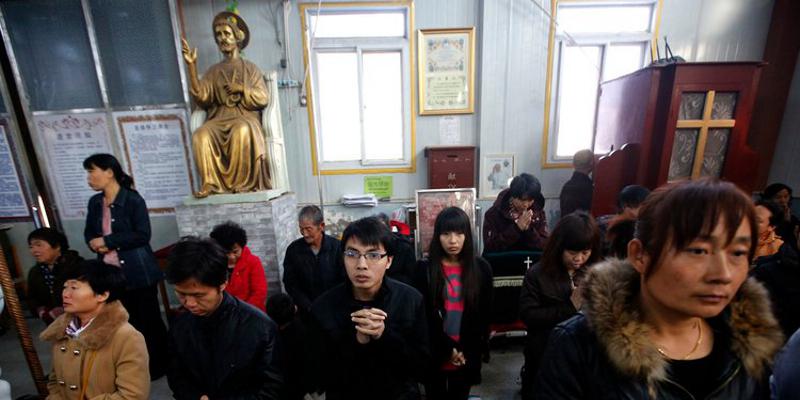

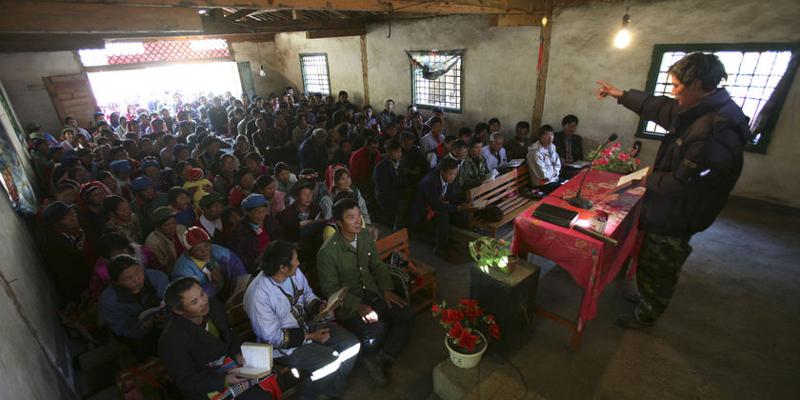
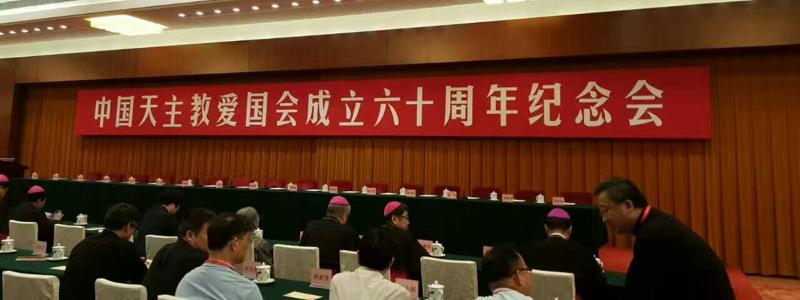

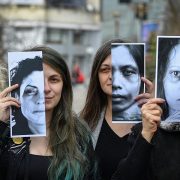
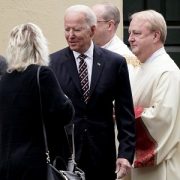
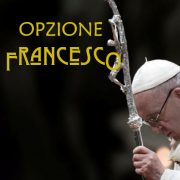

Asking questions are actually pleasant thing if you are not understanding something completely, but this article offers nice understanding even.